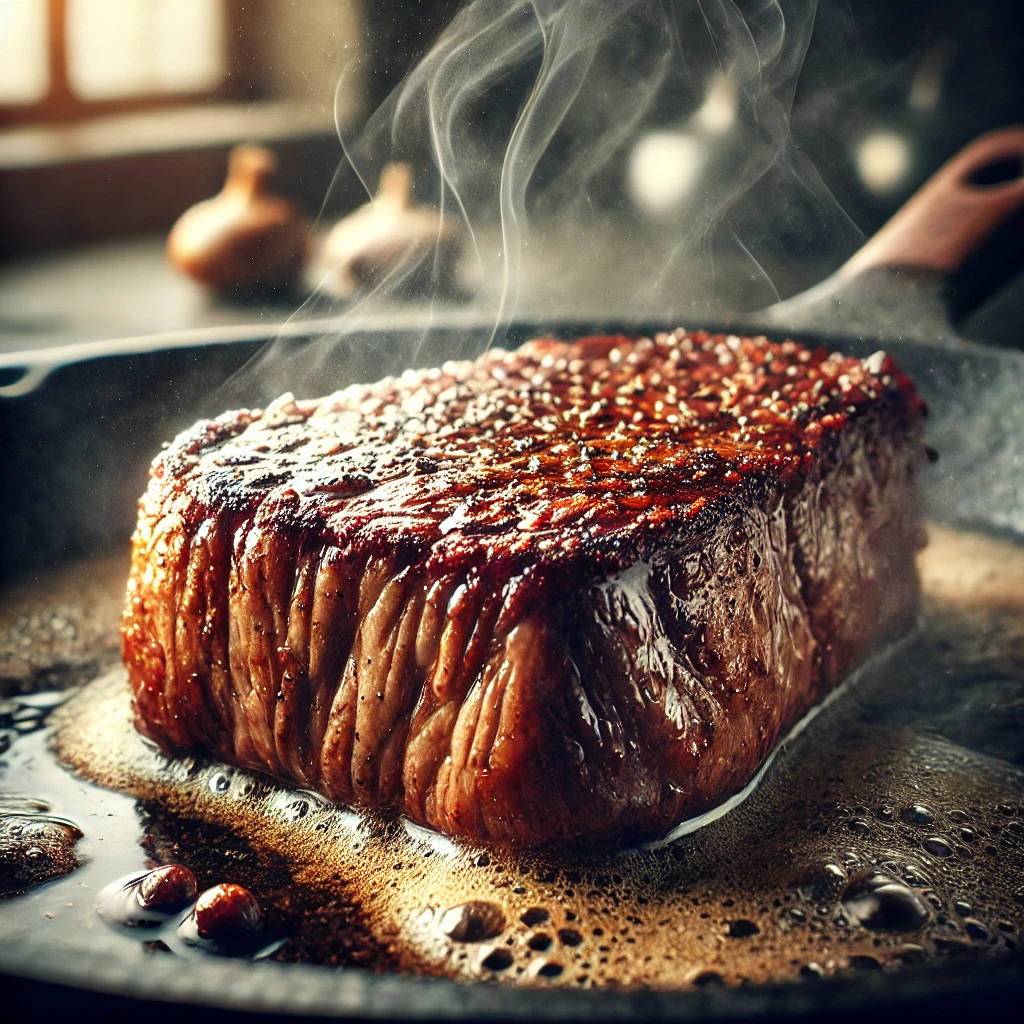Introduction: Have you ever wondered why a perfectly seared steak tastes so incredible, or why the golden crust on a loaf of bread is so irresistible? The answer lies in the Maillard Reaction, a fascinating chemical process that plays a crucial role in cooking. This reaction is the secret behind the rich, complex flavors that make our favorite foods so delicious. Let’s dive into what the Maillard Reaction is, how it works, and how you can use it to enhance your cooking.
What is the Maillard Reaction?
The Maillard Reaction is a chemical reaction that occurs when proteins and sugars in food are exposed to high heat. It’s responsible for the browning and flavor development in a wide range of foods, from meats and vegetables to baked goods and coffee. Named after French chemist Louis-Camille Maillard, who first described it in 1912, this reaction is the key to creating depth of flavor in your dishes.
How the Maillard Reaction Works
- The reaction begins when amino acids (the building blocks of proteins) and reducing sugars are heated together. As the temperature rises, they start to break down and recombine, forming hundreds of new flavor compounds.
- This process starts at around 285°F (140°C) and intensifies with higher temperatures, resulting in a complex blend of tastes and aromas that are often described as roasted, nutty, or caramel-like.
Examples of the Maillard Reaction in Everyday Cooking
- Searing Meat: When you sear a steak, the Maillard Reaction creates that beautiful brown crust, adding a rich, savory flavor that’s impossible to achieve through boiling or steaming.
- Roasting Vegetables: Roasted vegetables, like carrots or Brussels sprouts, owe their sweet, caramelized edges to this reaction, transforming their natural sugars into something extraordinary.
- Baking Bread: The golden-brown crust on bread is a direct result of the Maillard Reaction, giving the loaf its distinctive flavor and aroma.
- Toasting Coffee Beans: Coffee roasting is a perfect example of the Maillard Reaction at work, creating the deep, complex flavors that define a great cup of coffee.
How to Master the Maillard Reaction in Your Cooking
- Dry Your Ingredients: Moisture is the enemy of browning. Patting meat or vegetables dry with a paper towel helps speed up the Maillard Reaction by reducing surface moisture.
- Use High Heat: The Maillard Reaction thrives at high temperatures, so when you’re searing meat or roasting vegetables, don’t be afraid to turn up the heat.
- Don’t Overcrowd the Pan: Overcrowding leads to steaming, which prevents the Maillard Reaction from occurring. Cook in batches to ensure that each piece has room to brown properly.
- Avoid Constant Stirring: When sautéing or roasting, let your food sit for a moment to develop a good sear. Constant stirring can interrupt the reaction and prevent browning.
Historical Context: Louis-Camille Maillard’s discovery of this reaction over a century ago revolutionized our understanding of cooking. What began as a scientific curiosity is now recognized as one of the most important processes in food preparation. The Maillard Reaction is not only key to achieving delicious flavors but also plays a role in food preservation and the development of new food products.
Nutritional Insight: Beyond flavor, the Maillard Reaction can also impact the nutritional profile of food. While it creates irresistible flavors, the process can reduce the availability of certain amino acids, so it’s important to balance cooking techniques to maintain a healthy diet.
Conclusion: The Maillard Reaction is the magic behind some of the most mouthwatering foods we love. By understanding and mastering this reaction, you can elevate your cooking, creating dishes that are richer, more flavorful, and deeply satisfying. So next time you sear a steak or roast some veggies, remember—you’re not just cooking; you’re engaging in a delicious chemical dance that’s been delighting taste buds for generations.

